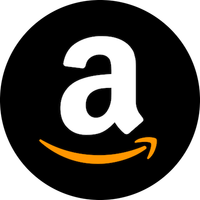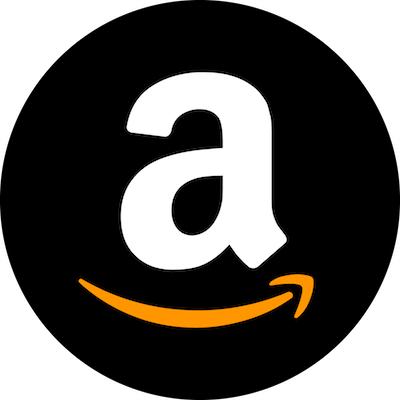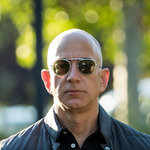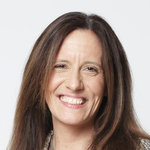
Amazon.com Inc
NASDAQ:AMZN

Amazon.com Inc





Amazon.com Inc., founded by Jeff Bezos in 1994, began its journey as an unassuming online bookstore in a small garage in Bellevue, Washington. With a vision far ahead of his time, Bezos was keenly aware of the untapped potential of the Internet, and as the web grew, so did Amazon. The company's initial focus on books provided a perfect entry into the digital space, but its model was designed for expansion. As it evolved, Amazon quickly diversified its offerings, venturing into electronics, clothing, groceries, and virtually every consumer product imaginable. By constantly redefining e-commerce, it transformed into a behemoth through strategic investments and innovations in technology and logistics. Key to its success was the seamless user experience it offered, supported by an expansive network of fulfillment centers and sophisticated data algorithms that personalized shopping experiences for millions of customers worldwide.
Beyond its direct retail operations, Amazon ingeniously expanded its economic footprint through Amazon Web Services (AWS), launched in 2006. AWS pioneered the commercialization of cloud computing services, providing scalable and cost-effective infrastructure solutions to businesses ranging from startups to global corporations. Today, AWS stands as a substantial revenue driver for Amazon, frequently contributing a significant portion of the company’s operating income due to its higher margin compared to retail. Furthermore, Amazon's ecosystem is bolstered by its Prime subscription model, which not only incentivizes customer loyalty with perks like free shipping and access to streaming services but also generates a steady flow of predictable income. These diverse revenue streams, supported by relentless innovation and customer-centric focus, underpin Amazon’s status as one of the most influential companies in the global marketplace.
Earnings Calls
In 2024, SIGA reported $133 million in product sales, a 2% increase marking consecutive growth. The fourth quarter alone saw $80 million due to diverse revenue, including an $11 million international sale. The company maintains a robust cash position of $155 million with no debt. Looking ahead, they anticipate completing a $70 million order in 2025 and aim for an FDA submission for TPOXX’s post-exposure prophylaxis by early 2026. SIGA remains committed to expanding its product market globally and reinforced its position as a critical player in bioterrorism preparedness.
Management

Jeffrey P. Bezos is the founder and former CEO of Amazon.com, Inc., one of the world's largest and most successful e-commerce companies. Born on January 12, 1964, in Albuquerque, New Mexico, Bezos showed an early interest in how things work, turning his parents' garage into a laboratory and rigging electrical contraptions around his house. Bezos graduated from Princeton University in 1986 with degrees in electrical engineering and computer science. After college, he worked on Wall Street in a variety of related fields, including a role at D. E. Shaw & Co., a hedge fund. In 1994, he left his lucrative job to found Amazon, initially an online bookstore, operating out of a garage in Seattle, Washington. Under Bezos’s leadership, Amazon rapidly expanded beyond books to become a dominant force in online retail. Known for his customer-centric approach and innovative strategies, Bezos diversified the company's offerings into numerous sectors, including digital streaming, cloud computing with Amazon Web Services (AWS), and artificial intelligence with products like Alexa. His commitment to innovation extended to creating physical stores without checkouts and the development of delivery drones. Throughout his tenure, Bezos was known for his focus on long-term growth and reinvestment of profits into the business, which occasionally drew criticism from Wall Street while enabling Amazon to stay at the forefront of technology and retail operations. In addition to his work with Amazon, Bezos founded Blue Origin, a space exploration company, in 2000, with the aim of reducing the cost of space travel and eventual human colonization of space. Blue Origin has successfully launched several suborbital missions and is working on more ambitious projects, such as orbital and lunar missions. In February 2021, Bezos announced that he would step down as CEO of Amazon to focus on other ventures, including Blue Origin and The Washington Post, which he owns. He transitioned to the role of Executive Chairman in July 2021, handing over the CEO position to Andy Jassy. Bezos has been the recipient of numerous awards and honors, reflecting his impact on business and technology, and his influence extends beyond his companies to philanthropy, notably through initiatives like the Bezos Earth Fund, focusing on climate change, and the Bezos Day One Fund, supporting homeless families and education. His leadership style and business acumen have left a lasting imprint on global commerce and technology.

Andrew R. Jassy is the President and Chief Executive Officer (CEO) of Amazon.com Inc., a role he assumed on July 5, 2021, succeeding the company's founder, Jeff Bezos. Jassy has been a pivotal figure in Amazon's corporate history, primarily due to his instrumental role in developing and expanding Amazon Web Services (AWS), the company's highly profitable cloud computing division. Jassy joined Amazon in 1997, right after completing his MBA at Harvard Business School. He was a significant part of the team that initially formulated the idea for AWS, which launched in 2006. Under Jassy's leadership, AWS grew into a multi-billion-dollar business, becoming the world's leading cloud services platform, which considerably contributes to Amazon's overall profitability. Known for his strategic acumen and deep understanding of the technology sector, Jassy has been recognized for fostering innovation and driving business growth. His leadership style is often described as detail-oriented and principled, with a focus on customer-centric solutions. Before becoming CEO, Jassy served as the CEO of AWS from its inception until July 2021. His transition to the role of Amazon's CEO marked a significant shift in the company's leadership, reflecting the growing importance of cloud services within Amazon's broader business strategy. Jassy's tenure as CEO is expected to emphasize continued innovation and expansion across Amazon's diverse portfolio of services.

Brian T. Olsavsky is a prominent executive at Amazon.com Inc., where he has played a crucial role in managing the company's finances. He joined Amazon in 2002 and has held various key positions within the company. Olsavsky became the Chief Financial Officer (CFO) in June 2015, overseeing Amazon's financial operations, including its financial strategy, investor relations, and management of its financial risks. Before becoming CFO, Olsavsky was the Vice President of Finance and CFO for the company’s Global Consumer Business, where he was instrumental in leading the finance functions for Amazon’s worldwide retail and marketplace businesses. His leadership has been pivotal in guiding the company through significant periods of growth and investment in new technologies and services. Prior to joining Amazon, Brian Olsavsky worked at Fisher Scientific, where he held a variety of financial and business management roles. He holds an MBA from Carnegie Mellon University and a Bachelor’s degree from Penn State University. Under his financial stewardship, Amazon has continued to expand its global footprint and diversify its business operations, further cementing its position as a leader in the tech industry.

David A. Zapolsky is a prominent legal executive who serves as the Senior Vice President, General Counsel, and Secretary for Amazon.com, Inc. He joined the company in 1999 and has played a vital role in overseeing Amazon's legal, regulatory, and compliance matters. Zapolsky's responsibilities include managing a global team of attorneys and legal professionals while advising the senior leadership team on a wide range of legal issues affecting the company. Before joining Amazon, Zapolsky was a partner at the law firm Dorsey & Whitney LLP, where he specialized in commercial litigation. He holds a Juris Doctor (J.D.) degree from the University of California, Berkeley, School of Law, and an undergraduate degree from Columbia University. David Zapolsky's extensive experience and leadership skills have been instrumental in navigating Amazon through various legal challenges and regulatory environments as the company has grown into a global e-commerce and technology powerhouse.

Douglas J. Herrington is a prominent executive at Amazon.com Inc., known for his significant contributions to the company's retail operations. Serving as the Chief Executive Officer of Worldwide Amazon Stores, Herrington oversees the company's retail business on a global scale. He joined Amazon in 2005, originally leading the Consumables business and later playing a pivotal role in launching Amazon Fresh. With a deep background in retail and consumables, Herrington has been instrumental in expanding Amazon's grocery and consumer goods sectors. Before his tenure at Amazon, he co-founded webvan, an online delivery service for groceries, and held positions at companies such as Guilbert and The Pillsbury Company. Herrington is recognized for his strategic vision and leadership qualities, steering Amazon's retail operations towards innovation and customer-centric approaches. His expertise and long-standing tenure at Amazon underscore his importance in navigating the complexities of the retail industry as e-commerce continues to evolve.

Shelley L. Reynolds is a prominent figure at Amazon.com Inc., serving as the Vice President of Worldwide Controller. In her role, Reynolds is responsible for overseeing all aspects of Amazon's accounting operations, financial reporting, and internal controls across its global operations. She plays a crucial role in financial oversight and ensuring the accuracy and integrity of the company's financial statements. Reynolds joined Amazon in 2006 and has since been a key part of the finance leadership team. Her vast experience and expertise significantly contribute to Amazon's robust financial management strategies. Prior to joining Amazon, she gained extensive experience at Deloitte & Touche LLP, where she served in various roles, including audit and advisory services, which provided her with a strong foundation in financial practices and operations. Reynolds is known for her commitment to excellence and her ability to lead complex financial projects and teams, ensuring that Amazon maintains its reputation for transparency and accountability in financial reporting. Her leadership is vital in navigating the challenges of Amazon's vast and dynamic marketplace.

Dr. Werner Vogels is a prominent technology executive known for his role as the Chief Technology Officer (CTO) and Vice President at Amazon.com Inc. He joined Amazon in 2004 and has been instrumental in shaping its technology strategy, particularly in the development and adoption of cloud computing through Amazon Web Services (AWS). Dr. Vogels holds a Ph.D. in Computer Science from the Vrije Universiteit Amsterdam in the Netherlands. Before his tenure at Amazon, he was a research scientist at Cornell University, where he focused on scalable and reliable enterprise systems, an area that played a crucial role in his later work at Amazon. As CTO, Dr. Vogels is responsible for driving the company's technological vision and strategy. He is known for his work on Amazon's distributed systems and for being a vocal advocate of cloud computing, which transformed how businesses deploy and manage their IT infrastructure. A respected figure in the tech community, Dr. Vogels often shares insights and innovations through public speaking engagements, his blog "All Things Distributed," and various industry conferences. His work has significantly contributed to Amazon's reputation as a leader in cloud services and technological innovation. Dr. Vogels is recognized for his commitment to customer-centric development, ensuring that Amazon's technology serves the needs of its diverse and global customer base.

Dave Fildes is known for his role at Amazon.com Inc. as the Director of Investor Relations. In this capacity, he serves as a liaison between the company and its shareholders, analysts, and the broader investment community. His role involves communicating Amazon's financial performance, strategic initiatives, and growth plans to investors, which is crucial for maintaining investor confidence and supporting the company's stock performance. Fildes has been with Amazon for several years, and during his tenure, he has contributed to shaping Amazon's communication strategy concerning its financial disclosures and market positioning. His efforts have been central during periods of significant company activity, such as quarterly earnings reports, mergers and acquisitions, and responses to market trends affecting Amazon's operations. His expertise in investor relations plays a vital part in how Amazon's business endeavors are perceived on Wall Street. His role requires a deep understanding of Amazon's complex business model, financial metrics, and strategic direction. By effectively managing investor communications, Fildes helps to ensure that Amazon's market value reflects its business fundamentals and long-term potential.

Anuradha Aggarwal is a prominent business leader known for her extensive experience in marketing and brand management. Before joining Amazon.com Inc., she has held significant positions in various multinational companies, contributing to her reputation as a seasoned executive. Anuradha began her career with Hindustan Unilever, where she honed her skills in managing consumer brands. She later served as the Chief Marketing Officer at Marico Limited, an Indian consumer goods company, where she played a crucial role in building and nurturing the brand portfolio. Her journey also includes a pivotal role at Mondelez International (formerly Cadbury), where she was instrumental in driving marketing strategies across diverse markets. With a strong educational background, including studies at prestigious institutions, Anuradha Aggarwal has developed a deep understanding of consumer behavior and digital transformation. At Amazon.com Inc., Anuradha Aggarwal holds a key position, where she leverages her expertise to enhance customer experiences and drive growth initiatives. Her leadership is marked by a focus on innovation, strategic thinking, and a commitment to leveraging data-driven insights to meet business objectives.

Beth Galetti is a prominent executive at Amazon.com Inc., serving as the Senior Vice President of People Experience and Technology. She is one of the highest-ranking women in the company and plays a crucial role in overseeing Amazon's vast global workforce. Galetti is responsible for managing human resources operations, talent acquisition, and employee development for the company. With a background in engineering and an M.B.A. degree, Galetti brings a strategic and analytical approach to her role. Her leadership style emphasizes innovation in HR practices, data-driven decision-making, and fostering an inclusive workplace culture. Before joining Amazon, she held various leadership positions in the logistics and healthcare sectors, which helped her develop a diverse skill set applicable to her current responsibilities. Galetti's work has had a significant impact on shaping Amazon's approach to workforce management, particularly during periods of rapid expansion and increased scrutiny regarding labor practices. Her efforts focus on enhancing employee experiences, implementing cutting-edge technology solutions, and aligning human resources strategies with Amazon's overall business objectives.




















































 You don't have any saved screeners yet
You don't have any saved screeners yet

Welcome to the SIGA business update call. Before returning the call over to SIGA management, please note that any forward-looking statements made during this call are based on management's current expectations, observations and are subject to risks and uncertainties that could cause actual results to differ materially from the forward-looking statements. SIGA does not undertake any obligation to update publicly any forward-looking statements to reflect events or changed circumstances after this call. For a discussion of factors that could cause actual results to differ, please see the company's filings with Securities and Exchange Commission, including, without limitation, the company's annual report on Form 10-K for the year ended December 31, 2024, and its subsequent reports on Form 10-Q and Form 8-K.
With that, I will now turn the call over to Diem Nguyen, Chief Executive Officer of SIGA. Diem, please go ahead.
Good afternoon, everyone, and thank you for joining today's call and review of our business results for the fourth quarter and full year of 2024. I am joined by Dan Luckshire, our Chief Financial Officer, and we appreciate this opportunity to provide an update to our company. After the update, we'll be happy to answer your questions.
I'm pleased to share that 2024 was a year of impactful execution and strong financial performance for SIGA. In 2024, we also made considerable progress on several initiatives to drive shareholder value including, one, continuing our partnership with the U.S. government; two, advancing regulatory approvals for TPOXX; and three, cultivating strategic partnerships to expand global access to TPOXX. With product sales of $133 million, up approximately 2% from 2023, we delivered the second consecutive year of product sales growth, reinforcing the critical role that TPOXX and a comprehensive smallpox preparedness program play in strengthening national security.
Additionally, our results highlight the strength of our financial position. Of the $133 million in product sales, about $80 million was generated in the fourth quarter from a diverse mix of revenue sources, led by deliveries of oral and IV TPOXX to the U.S. Strategic National Stockpile. This was followed by deliveries of both oral and IV TPOXX to the U.S. Department of Defense and deliveries of oral TPOXX in the international markets. The latter included a notable sale in East Asia for $11 million of oral TPOXX, which is more than double the size of the largest higher individual TPOXX sale in the region. This latest international milestone follows the first sale of TPOXX in Africa in the third quarter in response to a request from the Ministry of Health in Morocco.
Beyond the 2024 top line financial results, we have taken an important step to advance our key initiatives and strengthen our company, which we believe will produce shareholder value over time. I would like to highlight some of these steps. We continue to make progress on our international markets. Two examples stand out.
First, midway through 2024, our company assumed responsibility for promoting TPOXX outside the U.S. from Meridian Medical Technologies. This action has brought us much closer to our current and potential future customers, thereby enabling us to better understand and meet their needs. We've started to build an international sales and marketing infrastructure in 2024 and plan to continue to invest in that infrastructure to achieve our full potential in the international markets. We believe our conversations and actions will yield positive results over time.
Second, as announced earlier this year, we achieved another international regulatory approval when Japan's Pharmaceuticals and Medical Devices Agency in collaboration with the Japan Ministry of Health, Labour and Welfare approved TPOXX for the treatment of a broad range of orthopoxviruses. This approval marked another important milestone in our efforts to expand access to TPOXX. Additionally, it, coupled with the growing sales of TPOXX in East Asia, reinforces the value of antiviral stockpiling to ensure supply resilience during immediate crisis response to safeguard communities and individuals against smallpox.
To obtain this approval and in collaboration with our local partner, Japan Biotechno Pharma, we submitted a robust data package, which included studies involving healthy human volunteers, nonhuman primates and rabbits. No other drug approved to treat smallpox or any other orthopoxvirus is supported by such a comprehensive and extensive data package.
Shifting gears on cultivating strategic partnerships. In October, we announced an exclusive license to a portfolio of preclinical fully human monoclonal antibodies from the Vanderbilt University that have the potential to create a broad range of orthopoxviruses, including smallpox and mpox. Leveraging our existing capabilities to create new opportunities over the long term, we believe this portfolio has the potential to complement our TPOXX franchise and provide patients with additional therapies in this space.
While monoclonal antibodies represent an early-stage component of our pipeline, our TPOXX post-exposure prophylaxis program for smallpox or PEP is far more advanced. We continue to collaborate with the CDC in consultation with the FDA to complete the analysis of the samples collected to support the study's immunogenicity objective. As a reminder, the safety objective has already been successfully achieved. The CDC's work is underway, and we believe they will complete their analysis around the middle of this year. Based upon their projected time line, we are now targeting an FDA submission for the PEP indication in early 2026.
In addition to successes, we've also faced some challenges this year given the PALM 007 and STOMP clinical trial results in mpox. While the results of these trials were not a surprise given the mechanism action of TPOXX and the design of the trials, they have led to some important discussions about TPOXX that I'd like to address today. By the way of background, TPOXX was developed as a treatment for smallpox with the primary goal of reducing mortality and saving lives in an event of an outbreak. Approval under the FDA's rigorous animal rule, TPOXX is supported by extensive studies demonstrating its safety and efficacy in reducing mortality from smallpox.
Since smallpox vaccination programs were discontinued several decades ago, herd immunity has diminished, leaving populations vulnerable to its potential reintroduction. For example, in the U.S., approximately 190 million people were born after the end of the routine vaccination, leaving these Americans vulnerable. Additionally, the robustness of the immune response in those vaccinated more than 50 years ago cannot be determined. As such, the potential for its intentional reintroduction remains a serious concern.
For PALM 007 and STOMP, SIGA donated the product to trial sponsors to help advance mpox research and support the response to the 2022 global mpox outbreak. Because mpox is a far milder and largely self-resolving disease with a much lower mortality rate than smallpox, these trials were designed to measure the time for all lesions to heal between patients receiving TPOXX and those receiving placebo. While these studies did not show statistical significance difference between tecovirimat and placebo at this primary endpoint, the PALM 007 results did signal potential benefits for patients treated early or with severe disease.
Generally speaking, viruses replicate faster in the initial stages of infection, and administrating antivirals early helps curve virus replication before reaching its peak load, thereby reducing the severity of the disease. This principle was exemplified during the COVID-19 pandemic, where timely administration of antivirals prove critical in improving patient outcomes. The same principle applies to TPOXX. Tecovirimat works to reduce viral release from infected cells. Based upon tecovirimat's mechanism of action, we believe treatment would be optimized when administered early in symptoms or ideally post-exposure prophylaxis. The early phase of disease includes viral implication and dissemination throughout the body. As the disease progresses, the immune system works to clear the virus already released from the cell after replication.
In PALM 007, we saw the potential benefits for patients treated early or with severe disease. We're currently assessing viral load impact in mpox patients over time as we expect reduction in virus load with tecovirimat administration early, consistent with our nonhuman primate models. Both PALM 007 and STOMP enrolled patients at later stages of disease, a medium about 5.9 and 8 days, respectively, after self-reported symptom onset. We believe these trials are not necessary or effective of how or when the drug should be used based on its mechanism of action and potential value in smallpox outbreak. We believe TPOXX remains a vital countermeasure for reducing mortality from smallpox.
In a comprehensive preparedness plan, antivirals provide a critical line of defense. Complementing vaccines, antivirals can be used to treat an infection in patients who had not been vaccinated or do not benefit from vaccination. Antivirals have the potential to prevent onset of viral illness after exposure to the virus. The relationship between vaccines and antivirals is particularly important as we face the growing challenge of emerging infectious diseases and the threat of bioterrorism. Strategic stockpiling of antivirals helps ensure a swift coordinated response when disaster strikes.
Looking forward, we believe securing a new contract for the continuing supply of TPOXX to the Strategic National Stockpile, or SNS, represents an opportunity to enhance our company's long-term potential and help advance our national security bioterrorism preparedness. Since the new U.S. administration took office, we have seen many bold initiatives launched and executive orders enacted with more changes expected as new leaders are nominated, confirmed and put in place. With any change of administration, this takes time. While change can create uncertainty, it can also create long-term opportunities as priorities are clarified and new policies are enacted to enhance national security. We will continue to monitor these developments and assess the potential impact, if any, on our company.
Whatever transpires, we believe we are well positioned to engage with the new ASPR as well as other senior officials on the nature and timing of an RFP for a new contract for TPOXX. As a reminder, ASPR is within the U.S. HHS and houses the center of the Biomedical Advanced Research and Development Authority, or BARDA, and SNS. For reference, SIGA has been providing TPOXX to the ASPR for more than a decade, and national security is an issue that transcends political considerations. We believe the new administration is committed to maintaining a robust preparedness strategy, which includes the supply of antiviral therapies to treat smallpox. Furthermore, our current 19C contract was awarded under President Trump's leadership in 2018. With this in mind, we stand ready to negotiate with the new ASPR with the objective of completing a new contract in 2025.
In summary, this is a dynamic time for SIGA. We are strong, resilient and profitable. Our strategy is yielding results. Our disciplined approach to capital management gives us optionality. Our TPOXX franchise meets a critical need for smallpox preparedness, and our team has the expertise to drive results over the long term in the best interest of our customers and shareholders. In short, with a strong foundation, we believe we are well positioned for the future and the opportunities ahead.
With that, I'll turn it over to Dan to review the financial results in more detail.
Thanks, Diem. As noted earlier in the call, SIGA's product sales for this year surpassed full year sales. This represents the second straight year sales growth and a new high-water mark for annual sales since FDA approval of TPOXX in 2018. Product revenue for full year 2024 was $133 million. Of this amount, $80 million was recognized in the 3 months ended December 31, 2024.
In the fourth quarter, $51 million of oral TPOXX and $9 million of IV TPOXX was delivered to the Strategic National Stockpile, or SNS. $9 million in mostly oral TPOXX and a small amount of IV TPOXX was delivered to the U.S. Department of Defense, and there was an $11 million sale to an international customer in the East Asia region. To reiterate the comment made earlier in the call, the international sale in the fourth quarter represents a milestone in that it is more than double the size of the largest prior individual TPOXX sales in the East Asia region.
With respect to product sales for the full year 2024, the $133 million amount comes from a diverse mix, similar to the diversity in the fourth quarter. The revenue mix includes $74 million of oral TPOXX sales to the SNS, $26 million of IV TPOXX sales to the SNS, $10 million of oral and IV TPOXX sales to the U.S. Department of Defense and $23 million of oral TPOXX sales to 13 international customers.
In addition to product-related revenues, the company also had research and development revenues. For the 3 and 12 months ended December 31, 2024, research and development revenues were $1.6 million and $5.4 million, respectively. Pretax operating income, which excludes interest income and taxes, was approximately $57 million for the 3 months ended December 31, 2024. For the full year 2024, pretax operating income was approximately $70 million. In comparison, there's a pretax operating income for the 3 and 12 months ended December 31, 2023, of approximately $92 million and $84 million, respectively.
I would like to note that differences between pretax operating income margin in 2024 and 2023 and reflects different product mixes in those periods. Net income for the 3 months ended December 31, 2024, was approximately $46 million. For the 12 months ended December 31, 2024, net income was approximately $59 million. In turn, fully diluted income per share for the 3 months ended December 31, 2024, was $0.63. And for the full year 2024, fully diluted income per share was $0.82.
Throughout 2024, the company continued to maintain a strong balance sheet through an abiding commitment to financial discipline. At December 31, 2024, the company had a cash balance of $155 million and no debt. Looking forward to 2025, I would like to note that we had a $70 million outstanding order balance at December 31, 2024, which we expect to deliver in 2025.
This concludes the financial update. At this point, I will turn the call back to Diem.
Thank you, Dan. With that, we would like to open the call for questions.
[Operator Instructions] Your first question comes from the line of Jyoti Prakash from Edison Group.
My first question relates to oral TPOXX deliveries. We understand that around $60 million has been delivered from the most recently exercised BARDA option. Have there been any additional deliveries in 2025 to date? And can we expect the entire remaining order to be delivered in the first half given the expected RFP time lines with the U.S. authorities?
Thanks, Jyoti. I'll let Dan answer that question.
Yes. Thanks for the question, Jyoti. As noted in our prepared remarks, we had $70 million of outstanding orders at December 31, 2024. Most of these orders -- or these orders mostly consist of remaining deliveries of oral and IV TPOXX to the SNS under existing orders. We currently expect those deliveries to start in the second quarter based on coordination with the United States government. And we expect all $70 million of the outstanding orders to be delivered in 2025.
There's one, at the very end, you mentioned the RFP. And I guess just to make sure for clarity purposes, just to highlight that the RFP process is a separate process from the delivery process under the 19C contract. And in fact, the RFP timing is not impacted by the delivery timing. I just wanted to make that clear.
That's really helpful. My second question relates to your cash position. So you ended the year with a strong cash balance of $155 million. Can we expect you to announce another special dividend this year as you've been doing every year since 2022?
So I'll also take that question, too. Before I get into the direct answer, let me just give you some background. So as a starting point, our capital management strategy is meant to be dynamic and tailored to optimize positive outcomes for our shareholders both in the short term -- balancing the short term and the long term. This approach has been used over the past series of years. And so with that, the timing of a special cash dividend each year, it's influenced by several factors, which we regularly review. Some of the factors include cash flow performance, capital allocation priorities, external market conditions. So there's a series of factors that we're continually reviewing.
And so when you look at prior years, there's really no specific time line for when special cash dividends occur. In '22 and '23, the Board of Directors declared a special cash dividends in May, which were paid in June. And then in '24, the special cash dividend was declared in March, and it was paid in April. So there's some movement in terms of timing. So when you sort of bring all these things together, to your question, and when you take all these things into account, we currently anticipate making a capital management decision in the second quarter, which is consistent with the timing for most prior years.
Great. My next question relates to your international growth. First of all, congratulations on receiving the regulatory approval in Japan for TPOXX. Can you provide some more details in terms of your distribution agreement with Japan Biotechno Pharma? And just to follow up on that, you made $11 million of international sales in the last quarter. Does that relate to delivery to Japan Strategic National Stockpile?
Right, right. So on the first part of the question, the terms of the distribution agreement with Japan Biotechno Pharma, or JBP, those terms have not been disclosed. What we can say though is that the distribution agreements with JBP or within other countries were different in nature than the promotion agreement we had with Meridian. And the key point here is that distribution agreements will not have the same level of fees that were paid to Meridian. It's a much more efficient model and financially better for us.
On the second part of that question in terms of the $11 million international sale, right now, at this time, we're not currently disclosing that customer. As mentioned in the prepared remarks, customer is located in the East Asia area, but we're not disclosing the specific customer.
I have another couple of questions. So the next one is related to the mpox opportunity. How do you see that evolving given the results from the PALM 007 and STOMP trials? We understand that there were subsets which -- subsets of patients which -- who saw good results in the PALM 007 trial. So is there any plan to adjust the design of the remaining trials to focus on these particular subset of patients?
Jyoti, thanks for that question. I'll take this one. Just an overarching concept, we are continuing to work with NIAID. They are specifically the PALM 007 and STOMP trial sponsors. We are working with them to fully analyze the clinical data, including reviewing data from certain subgroups, as you mentioned, to determine what types of patients may potentially benefit the most from tecovirimat as well as the optimal treatment regimen. Once this data analysis is complete, we will then be in a better position to determine the best path forward from both a clinical trial and regulatory perspective.
I think it is important to note that while we learned a lot from these trials, they certainly had some limitations associated with the trial design. The primary objective was to provide access from a humanitarian perspective. That was particularly consistent in the PALM 007. These trials are not designed by SIGA, and they were not designed with the drug development in mind.
As the result, we expressed some of the limitations associated with the mechanism of action. Antivirals generally work based on how their mechanism of action is executed. Tecovirimat's specific mechanism of action, the typical patient profile, the design of the trials, it's not unexpected these trials did not meet their primary endpoint to full resolution of all lesions. As with the case of STOMP and PALM 007, SIGA is not the sponsor of these ongoing trials, so we do not have the ability to modify the designs based on learnings with current ongoing trials. However saying that, Jyoti, we will continue to evaluate the potential benefit of tecovirimat treatment on mpox patients and then design and execute on further studies accordingly.
Great. That's super helpful. And I have one final question. What do you think of the recent funding cuts for the NIH by the Trump administration? And do you see any sort of flow-through impact on your expected RFP for TPOXX?
Thanks, Jyoti. We can only speak on behalf of SIGA. First and foremost, I would say that SIGA has a long history of collaboration with the U.S. government agencies, including through 4 administrations that is inclusive of Biden, Trump, Obama and Bush. And these relationships naturally evolve following changes in leadership from an administration perspective.
For now, our focus remains on maintaining strong partnerships and continue to play an important role in supporting the U.S. national security and public health initiatives. Based on our experiences and conversations today, we do believe national security is of utmost importance, and it does transcend partisan politics and that the new administration is committed to maintaining a robust preparedness strategy, which does include supply of antiviral therapies to treat smallpox. Whatever transpires during this transition period, we believe we are well positioned to engage with the new ASPR as well as other senior officials on the nature and timing of the RFP for a new contract for TPOXX. At this time, any further comment would be purely speculative in nature.
Okay. No further questions, and congratulations again on the strong quarter.
Thanks, Jyoti.
[Operator Instructions] Your next question comes from the line of Brian Adams from [ Carter, Cargo, Terry ].
Great year. A couple of quick questions. On the kind of the process of reengaging with BARDA and potentially, again, blue skies, gray skies looking forward, if this were a baseball game and it's 9 innings and we're reupping the contract for we all hope to be maybe a number that would be greater than the $555 million, $575 million of original contract 6 years ago, where do you think we stand on this? Are we in the fourth inning, fifth inning? You had kind of alluded to, ma'am, Dr. Nguyen, that would -- some kind of decision would be made this year. Would there be a [ COLA ] increase, maybe a number in the $700 million to $800 million range? That's my first question.
And then secondly, the inventory that's on the book shows $49 million. What exactly is that? Is that the value of the drug on your -- that can be deployed? And I'm assuming that will meet a portion of the $70 million of the legacy contract that still needs to be filled. So those are my first 2 questions.
Brian, thanks for the thoughtful questions. I will target the first section and then let Dan talk you through with the inventory. First and foremost, I would start by saying that we have continued conversations with BARDA and SNS in terms of tecovirimat and its primary treatment of choice for smallpox. There is a continued re-enforcement of this importance to the U.S. government from a preparedness perspective. We have talked quite a bit about manufacturing strategies as well as potential volume.
However, Brian, we have not identified a specific range of volume to date. I can only say based on macro dynamics that we're facing in our environment today that the smallpox threat continues to increase. Now whether that be from geopolitical tensions or from naturally occurring concerns based on a vulnerable patient population that may not be vaccinated, we think that this is certainly an important time to reflect on the volume requirements. That discussion still remains to be executed or discussed. Dan?
Yes. So on the question about inventory, and it ties a little bit into what Diem was saying in that given what's happening on the geopolitical front, which is -- it keeps getting ratcheted up, but this has been something that's been building for a series of years in terms of risk. And with that, we've been trying to be proactive in terms of having products throughout the supply chain. So within that inventory balance, it does include product to be delivered on that $70 million of outstanding orders. But also, it includes a fair amount of API so that when there are future orders, we have the ability to be responsive in a very efficient way and in a scale manner. So we are trying to be proactive, but that amount does also include cost of product to be delivered under existing orders.
Okay. And then just asking a very pointed question and not to make anybody difficult, but I want to ask this because it was a really significant company-specific situation. What is the continued, if any, fallout from Dr. Varma in regards to question from your peers or from NIH or BARDA in regards to efficacy of basically TPOXX to treat the early stages of mpox? And I mean you are and have rightfully refuted it. But has it impacted sales, I guess, from what you're hearing or seeing?
So Brian, thank you asking. I want to start by saying that we have had over a decade of a relationship with BARDA as well as SNS from a U.S. perspective. This started originally from the co-development of our product tecovirimat, where we have been incredibly transparent and collaborative in terms of our science. This has then progressed to the procurement of the stockpile of tecovirimat.
Jay had been at SIGA for less than a year. In terms of his contributions, I would say that it's minimal, if not none. He was not part of the development of tecovirimat, and he certainly was not part of the clinical trial execution. So we stand by our science. We stand by the data, and so do our partners in terms of the importance of an antiviral like tecovirimat as well as the preclinical and clinical data that shows its safety, and finally, the preclinical data that demonstrates efficacy.
Okay. Great. And then my final question. And I applaud you for making the deal, I guess, with Vanderbilt a few months back. But with the cash war chest that you've got, I mean, it would be my recommendation as a shareholder and a portfolio manager that you -- and you're probably already looking at this, but to build out yourselves beyond arguably 1 or 2-trick pony, so to speak, or stable. Are there other either drugs or bioterrorism prophylaxis portfolios or drugs that you're looking at right now that you could tuck in to your portfolio that would be another source of potential revenue and/or income for you down the line?
So Brian, I would actually say that coming in to SIGA almost a year ago, one of the priorities I have is to maximize the TPOXX franchise, which includes global expansion from a registration perspective. But the second aspect is looking at potential diversification of the pipeline. You saw the active -- the degree of activity we had pursued in 2024. I'd like to continue to pursue in 2025 portfolio diversification, exactly to your point.
There are no further questions at this time. I will now turn the call back to Diem. Please continue.
So I wanted to thank everybody for their time today and joining us for today's call and for your ongoing interest in SIGA. We look forward to speaking to you again in our first quarter call. Have a good rest of your evening. Thank you.
Ladies and gentlemen, this concludes today's conference call. Thank you for your participation. You may now disconnect.